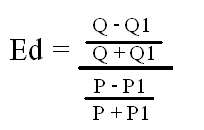Starting up quickly today. That’s good.Back to Elasticity of Demand.

Elasticity of demand can also be calculated for income elasticity, and for cross demand, also known as cross-price elasticity of demand. The calculation methods are the same, although the relationships will be different.
Elasticity is not the same for all products at all times.
Demand for luxury goods tends to be less elastic. The demand for luxury goods is less affected by increases in price, because changes in the price of the good are relatively small compared to the base price of the luxury. This is Nuwal’s interpretation, which directly conflicts with the textbook, but not irreconcilably. I suspect the book claims demand for luxuries is highly elastic, because if a person’s luxuries bocome meaningfully more expensive, that person will be highly inclined to reduce luxuries consumed. Nuwal is looking at a luxury as an “expensive good” while the book is looking at luxuries as “goods which can be done without”.
Demand for necessities is also relatively inelastic; a true necessity can’t be done without, so a rise in price doesn’t reduce quantities consumed much.
Elasticity for a particular good is strongly affected by:
- The existence, number, and quality of substitutes for that good
- The percentage of a person’s total budget devoted to that good.
- The length of time allowed for adjustment to changes in the price of the commodity
The second test will be on:
- Elasticity of Demand
- Cost Concepts
- Production Function
- If time permits, Indifference Curve Analyses